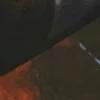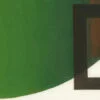In January 1506, workmen digging foundations near the Baths of Titus discovered a buried sculptural group, undisturbed since antiquity. The Florentine sculptor Giuliano da Sangallo came to the site and authenticated the work: it was the Trojan priest of Apollo, Laocoön, and his twin sons Antiphantes and Thymbraeus. As recounted in the second book of The Aeneid, the men, in their struggle with sea serpents sent by Athena, are doomed. The unequaled virtuosity of this depiction of straining muscles and mortal passions was the achievement of a trio of Hellenistic sculptors from Rhodes: Polydoros, Agesandros and Athanadoros, whose work had been much praised in ancient times, notably by Pliny the Elder. The Laocoön sculptures were installed at the Vatican, and have since then remained a visible ideal of the highest artistic achievement. The work has been copied countless times. Baccio Bandinelli and his workshop executed a painstaking but dull copy in the 1520s. Michelangelo, who was present when it was brought out of the ground, made sketches. So did Jacopo Sansovino.
In 1803, the heads of Laocoön and his sons were cast in plaster at the atelier de moulage at the Louvre by Jean-André Getti, director of the atelier. Getti’s casts, depicting only the anguished faces of Apollo’s wronged priest and his blameless sons, implicitly invited the viewer to imagine the writhing serpents and struggling limbs of the ancient original. Less than a quarter of a century later, the heads were purchased for the teaching collection at Harvard University. As of this writing, those heads, like everything else in the university’s museum collections, sit in darkness, under lock and key.
When it was still possible to visit the Harvard Art Museums, I used to walk from my home down Kirkland Street and then across to Quincy Street, a fifteen-minute stroll in fine weather or an intense ten-minute walk through a blizzard. If, leaving home, I walked the other way, down Beacon Street in a south-easterly direction, I would come to Inman Square, to a restaurant there, or to a favorite bar. But the bar is currently closed, as are the libraries on campus. The classrooms are empty, the restaurants are takeout only, the museums are shut, and my office is inaccessible. These were my various reasons for walking in the neighborhood. With none of them currently viable, the meaning of going for a walk has changed: it is now an unmotivated ambulation, with no destination to give it ballast. Such was my experience for the first week or two of the new reality. But soon afterward, I began to take a camera out with me, and the presence of the camera on those walks, which took me all over Cambridge and Somerville, shifted the register yet again, and I became alert to the streets in a new way.
I began to photograph trees. My attention was particularly drawn to the ways they had accommodated themselves to the urban environment, or the ways they had been pressed into making such accommodation. Everything in tree life, I came to feel, was a negotiation made visible. On many more trees than I had noticed before, I saw evidence of pruning, trimming, thinning, pollarding, supplemental support and coerced tropism. Trees grew out of concrete, next to fences, through fences. They seemed to be fighting silent battles or suffering indignities, appeared to emanate strain, stress and heroic endurance. Such twists and torsions, such violent constraint and wild entanglement, when I noticed them in a young beech that had entwined itself around a utility pole on Cleveland Street, just south of Broadway, brought my mind back to the Laocoön sculptures. The interlaced branches were now arms, now serpents. The beech was a tragic hero, petrified. I made many pictures of such trees, and each time, some analogy to art would impress itself on me, the more so because of the universally locked museum doors. The dramatic stage, as it were, was now out on the streets: here was a spiky shrub as in Dürer’s Quarry, here a pyramidal arrangement of diagonals as in David’s Oath of the Horatii.
But I was unable to capture what were likely the most famous trees in Cambridge: the elms of Harvard Yard. An impressive collection of mature elms had once provided a major portion of the leaf canopy there, and the shade those trees provided was most spectacularly experienced in the so-called Tercentenary Theatre, a large outdoor area bordered on four sides by buildings and crisscrossed by paths which, in the leafing months, became a kind of arboreal cathedral through which dappled light filtered down to the grass below. Less stately trees bearing signs of injury or hinting at some botanical conflict were easier to find away from the manicured campus. Standing before one leafless and severely amputated tulip tree in Somerville, almost a dead stump, I felt as though I had been transported back to Colmar, in Alsace, and was once again in front of the crucified Christ painted by Matthias Grünewald for the Monastery of St Anthony in Isenheim in 1515. That institution, at the time of Grünewald’s work there, was dedicated to the care of victims of plague. And it was through this mass suffering that contemporaries would have understood the tortured Christ and the weird colors in Grünewald’s painting. The tulip tree had a stark cruciform shape, and the visible splotches covering certain of its branches evoked the sores and wounds that marked the entirety of Christ’s body in Grünewald’s painting.
On a different day, in Cambridge, I saw a slim pair of maples lashed together with a black band. These conjoined trunks projected meaning as suggestively as Rembrandt’s landscape print The Three Trees, made in 1643, during his difficult years following the delivery of The Night Watch commission. His wife Saskia had died the previous year, and he was in the middle of what would prove the longest stretch in his career without self-portraiture. Perhaps some of that undisbursed self-reflection was transferred to The Three Trees, which is not only the largest print he ever made, but might be, by certain measures, the most complex. He used a variety of intaglio techniques on the plate, including etching, engraving and dry point, in his determination to stretch the technical possibilities of both burin and stylus. Close examination of the sheet reveals numerous anecdotal details: a man and woman fishing, an artist sketching, a horse cart, lovers hidden in the weeds, windmills tiny as midges, and a distant city on the horizon. And yet, that very print, which he presented in just one finished state, was in some senses exceedingly simple, even blunt, for at first glance it seemed to depict little more than the titular trees, with their three leafy heads tangled up in each other, a hill and a turbulent sky. To look at that brooding sky, on which bad weather moved from left to right, and to contemplate the threeness of those imprecise trees – their foliage like that of a willow, their bark like that of an ash – was to be put in mind of Calvary’s three crosses, or otherwise to be reminded of the Holy Trinity.


Sign in to Granta.com.







